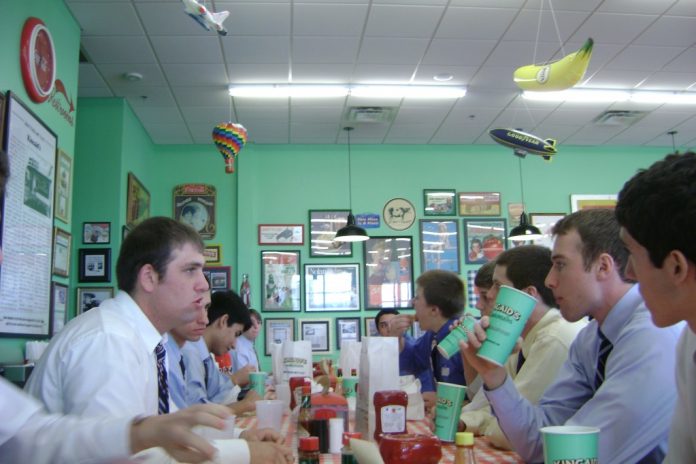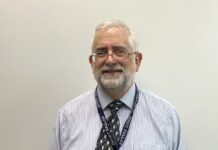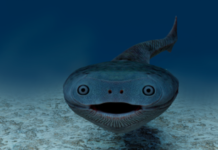The April 2011 senior level Forensics class field trip to the Bureau of Printing and Engraving in Fort Worth and the Federal Reserve (the Fed) in Dallas excited all of Ms. Catherine Clayton’s classes. Bus driver Coach Rick Leal unloaded us on the west side of the Federal Reserve.
Security is very tight, and no one is allowed to bring items in. Ms. Clayton told us, “Only one person at a time may pass through the front revolving door or else it will lock!” After everyone successfully made it into the building, tour name tags and badges were distributed. Then, we were introduced to Ms. Clayton’s brother Stephen who works at the Fed with our tour guide Phillip.
While part of the group listened to Stephen’s outstanding presentation about how the Fed came about and what it is doing today, the other half toured with Phillip. We learned about the history of thee Fed and the economics regarding counterfeiting, including trying to stop it. Stephen told us that the primary job of the Fed is to dispense usable money to its district. On the tour, we saw the processing rooms through a series of glass windows. In these rooms, money transported from banks in armored trucks gets dropped off at the Fed and put into large, four feet crates that carry anywhere from $32,000 to $100,000 of cash in each crate. These crates then get rolled up into rooms that have some closed circuit security cameras with lots of mirrors. These mirrors go all the way around the room and are located between the wall and the ceiling.
Inside these two rooms several workers unload the cash, sort the cash by type (e.g., 20’s, 10’s, etc.), count the cash, and load the cash into a huge rectangular prism machine. The job of the machine is to check for old bills and counterfeit bills. The machine has two pipes coming out of the top of it for the unusable bills to be sent away. The counterfeit bills are locked into a clear lock box and the Secret Service collects them to investigate. We learned that the bills are primarily cotton and are made more of a cloth than paper. After the tour, Stephen Olson said, “I cannot believe that there is nine million dollars right in front of my eyes.” Hansel Reyes looked at one of the stacks of a hundred dollar bills in the crate and said, “I can’t believe that one of those stacks could pay for my entire college tuition.” At tour’s end, we were each given a bag with eighty dollars in it, unfortunately shredded.
Then, we headed to the Bureau of Printing and Engraving in Ft. Worth. To our surprise, this time we did not pull into the main entrance of the prison fenced compound. We had to drive another two blocks down the small, two lane highway to the visitor center. The bus pulled up to the visitor center and we waited as an automated voice came on loud speaker system telling us to unload the bus and enter the building. As we entered the building we were greeted by a group of about five or six security guards that instructed us to take off all metal jewelry and metal belts and walk through the metal detector. Once through the metal detector, we loaded another smaller bus that took us through several barbed wire fences to the actual tour guide center of the Bureau of Printing and Engraving. We all received a wristband and quickly went up the steps to the tour desk.
We walked around a series of hallways with glass windows overlooking different areas of the factory floor. We followed the paper trail, from where it comes in on armored trucks to where it is dried, cut, and packaged. A neat fact to know is that every bill printed in Fort Worth has an “FW” printed on it next to the serial number. Also, only two places print U.S. money, D.C. and Fort Worth.
Forensics is a great senior science elective. Ms. Clayton uses a college lecture format, and I have found her class helpful in perfecting my note taking skills. We have just completed our first lab and test, a mock case to solve using the skills that she has taught us. This unit test covers handwriting and forgery. The possible crime involves the will of a grandmother possibly forged by one of her greedy children. Ms. Clayton gave us pens from each of the children’s houses. One of the pens was used in writing the dead grandmother’s will. She also gave us the signature on the will and an official signature from the grandmother. Using the forensic skills we have learned, we were to analyze the signature and figure out if the ink in the will belonged to one of the pens found in one of the children’s houses. If so, based on our conclusions, we would present who we believed was guilty.
I have always enjoyed forensic science television shows like CSI and knew I would enjoy Forensic Science class. I may end up studying it in college, but more importantly it gives me insight into what actually happens in Forensic Science versus the television version.






